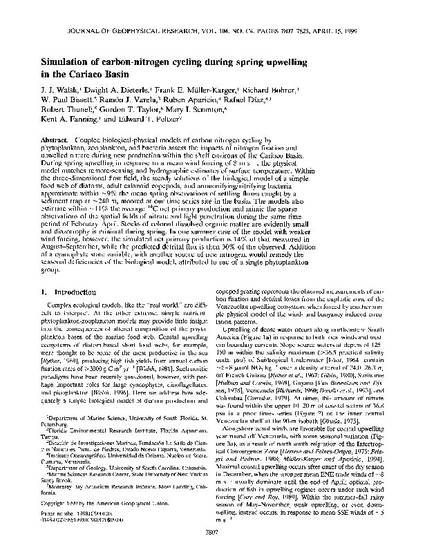
- phytoplankton,
- zooplankton,
- bacteria,
- ecology,
- biochemistry,
- thermal impact
Coupled biological-physical models of carbon-nitrogen cycling by phytoplankton, zooplankton, and bacteria assess the impacts of nitrogen fixation and upwelled nitrate during new production within the shelf environs of the Cariaco Basin. During spring upwelling in response to a mean wind forcing of 8 m s(-1), the physical model matches remote-sensing and hydrographic estimates of surface temperature. Within the three-dimensional flow field, the steady solutions of the biological model of a simple food web of diatoms, adult calanoid copepods, and ammonifying/nitrifying bacteria approximate within similar to 9% the mean spring observations of settling fluxes caught by a sediment trap at similar to 240 m, moored at our time series site in the basin. The models also estimate within similar to 11% the average C-14 net primary production and mimic the sparse observations of the spatial fields of nitrate and light penetration during the same time period of February-April. Stocks of colored dissolved organic matter are evidently small and diazotrophy is minimal during spring. In one summer case of the model with weaker wind forcing, however, the simulated net primary production is 14% of that measured in August-September, while the predicted detrital flux is then 30% of the observed. Addition of a cyanophyte state variable, with another source of new nitrogen, would remedy the seasonal deficiencies of the biological model, attributed to use of a single phytoplankton group.
Journal of Geophysical Research, v. 104, issue C4, p. 7807-7825
Copyright 1999 by the American Geophysical Union
Available at: http://works.bepress.com/john_walsh1/9/
